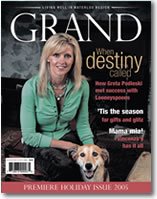Deeper discounts on subs
It's interesting to see what they offer both in the flyer insert and online (you can see all the titles for yourself by going here). It's also interesting to see who the biggest discounters are. It's generally Canadian titles that lead the way.
Maclean's (84%)As can be seen, 9 from this list of the top 20 discounters are Rogers titles, led by Maclean's; 4 are from Transcontinental and only 3 from U.S. publishers. Of course this is not an exhaustive list of titles, and not all publishers are included, only those who have agreed to participate. But the list is still a long one, with 46 titles in the brochure. These include many of Canada's largest titles and some of the best known U.S. titles that circulate here. There are a total of 73 titles, Canadian and U.S., offered on the Rogers Magazine Service website.
Toronto Life + Fashion (82%)
Today's Parent (74%)
Canadian Business (73%)
Flare (72%)
TV Guide (69%)
Chatelaine (69%)
The Hockey News (65%)
Carguide (64%)
Inc. (64%)
Style at Home (63%)
L'actualite (63%)
Ontario Out of Doors (62%)
Loulou (English and French) (62%)
Chatelaine (French) (61%)
Canadian House & Home (57 %)
Outdoor Canada (56 %)
The Walrus (56 %)
Bicycling (54%)
Fitness (54%)
In almost all cases, the discounts are considerably deeper than a similar offer from the same source, three and a half years ago (June 2002).
The percentages are all in Canadian dollars and the discount is based on a comparison with the magazine's stated cover price.










